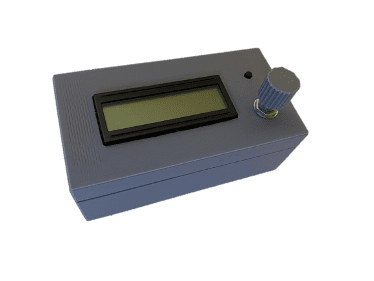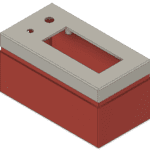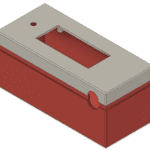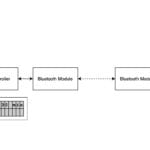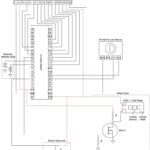Growing up, my parents limited the amount of screen time I had to 30 minutes per day. This encouraged me and my brother to be active, playing sports, biking, etc.
Some parents don’t restrict the amount of screen time their children have, and studies have shown that this can have an adverse effect on the physical and mental well-being of children.
Over these past two quarters, I developed a device which can keep track of the amount of time you spend exercising, so that you can use it as a limit on the amount of screen time you get later (e.g. 30 minutes of exercising gives you exactly 30 minutes of screen time).
Our Team

Evan ASHLEY
CPE UNDERGRAD

DR. PAUL HUMMEL
ADVISOR
Acknowledgements
A big thanks to my dad, and our family friend Mark for suggesting this project idea. I wouldn’t have thought of it otherwise.
Project Videos
BUILD VIDEOS
DEMO VIDEOS
Digital Poster
Problem Statement
Design a device which converts exercise time to “entertainment” time. There are two main components required to accomplish this: a device which determines how many minutes of exercise you complete, and a device which “spends” the minutes by powering electronic devices. For example, you might ride an exercise bike for 30 minutes to build up “fitness minutes” (as I am calling them) and then spend them by watching 30 minutes of television before the television is automatically shut off.
Design Constraints
- Both devices must be connected via Bluetooth
- The consumption device must be enabled and disabled by either device
Design Concept
I presented the hardware overview to Dr. Hummel in the first couple weeks of the project and this enabled us to quickly decide what features we needed and which components we were going to use.
As I acquired components, I made a rough sketch of the circuits as needed and built them into the final design. Towards the end of the project, I compiled all of the sketches together into the hardware schematic.
Finally, the designs for the two boxes were made mostly in the second quarter. While having breadboarded circuits would enable me to quickly point at components and circuits involved, I wanted to at least prototype a production style case to hide the electronics.
Final Design
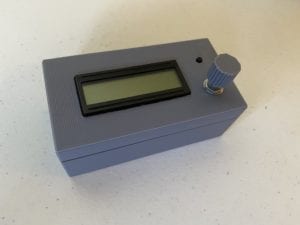
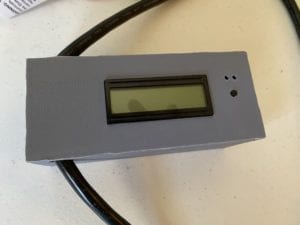
Components
- ESP32-PICO-V4
- G2R-1-T DC5 Relay
- NHD-0216HZ-FSW-FBW-33V3C LCD
- KY-040 Rotary Encoder
- Assorted push button switches, LEDs, and jumper wires
Recommendations
- Add a Bluetooth reconnection sequence for when the devices get disconnected
- Add memory to the Consumption Device to store “fitness minutes” across power cycles
- Design mounts for the Bluetooth indicator lights into both boxes
- Make the relay more responsive to power changes (it flips on the second, not instantaneously)
- Add a battery to the Fitness Device, and a AC to DC converter to the Consumption Device

